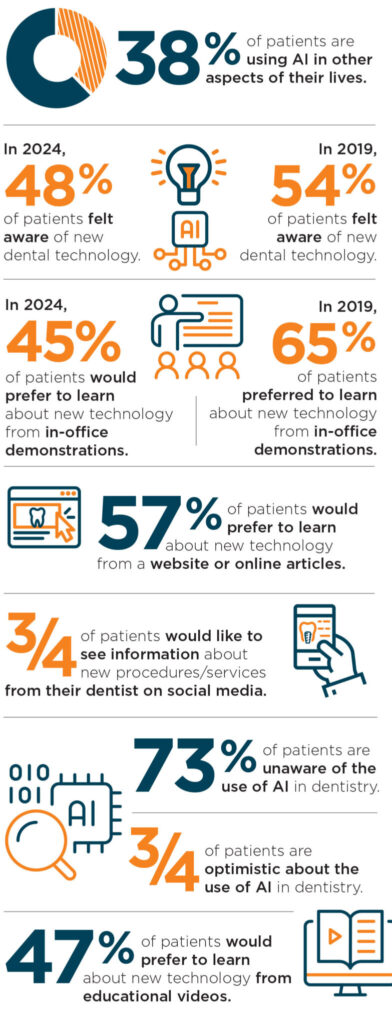
According to our 2024 survey of Canadian dental patients, over half of respondents do not feel aware of new dental technologies or procedures, and they have even less awareness of how artificial intelligence (AI) is being used in the dental office. This is a huge problem. If patients don’t understand the procedures and technology being used, why would they accept treatment?
The solution is to ensure you are efficiently educating your patients, but what is the best way to do this? Back in 2019, when we asked patients how they would prefer to learn about new technologies, the top response was in-office demonstrations. While that is still a popular education tool, in our most recent survey, the most popular response had shifted to websites and online articles.
Your website is an excellent hub of information on your team and the procedures you provide. However, be sure to keep it updated with educational content as well. This is somewhere you can direct patients to so they can learn more in their own time. Many dental companies also provide educational tools, such as apps and reports, that you can provide to each patient. Be sure to take advantage of these patient tools, especially if they are already included in the software you’re using.

As seen in the print issue of Oral Health May 2025
In 2024 Bramm Research, a third-party independent research house, conducted a confidential online survey of general population Canadians who have visited a dentist within the past two years. The survey was limited to those 25 years or older, and nine age brackets were filled proportionally to the Canadian general population. Provincial proportions were also filled to proportionally represent English speakers in Canada of age 25 or higher. The target sample for gender was 50% female and 50% male. The survey launched on Friday, September 20th and closed on Thursday, October 3rd for a total of 14 days in field, and the number of completed responses was 1,000, the same as in 2019. With a total sample of 1,000, the margin of error is plus or minus 3.1 percentage points at the 95 percent confidence level. If, for example, 50% of the sample indicated that agreed with a statement, then we can be reasonably sure (19 times out of 20) of an accuracy within +/- 3.1%. This means that a total census would reveal an answer of not less than 46.9% and not more than 53.1%.
Sponsored by












